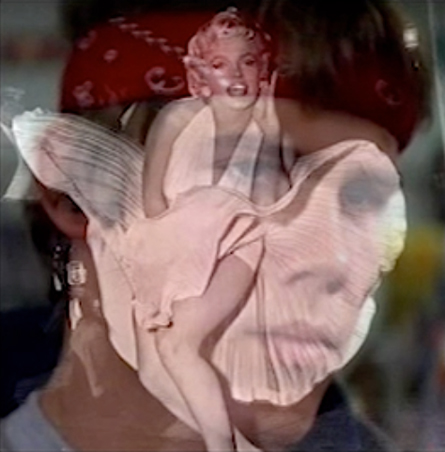- More than 2 years ago

Using nothing but thoughts, people can coax a brain cell that likes Marilyn Monroe to overpower a Josh Brolin–favoring cell in a dominance battle that brings her image up on a computer screen, a study appearing October 28 in Nature shows. The paper expands on data presented last year at the Society for Neuroscience’s annual meeting in Chicago (SN: 11/21/09, p. 9) and shows how the brain makes choices about what to pay attention to in a sensory-rich world.
Study coauthor Moran Cerf and his colleagues eavesdropped on single neurons with electrodes that had already been implanted for medical reasons in the brains of people with epilepsy. These cells fired when the person saw particular people, places or things, such as the Eiffel tower, Bill Clinton or bananas.
The team set up neuron contests by linking cell recordings to a computer that flashed images on a screen. In one trial, a Monroe neuron and a Brolin neuron went head to head as a person saw a hybrid mashup of the two stars’ pictures. Each time the Monroe neuron fired, her image would get brighter, and when the Brolin neuron fired, his image would get brighter. Researchers told the participant which person was the target, and watched as the neurons duked it out.
In most trials, subjects quickly became experts at causing neurons to fire with their thoughts alone, even when faced with a “distractor” image, says Cerf, who conducted the research while at Caltech but is now at New York University.
In the midst of a losing neuron duel, subjects could often turn the tide by focusing hard on the fainter image, Cerf says. Other subjects boosted particular neuron activity by chanting the name of the person out loud.
Researchers are eager to develop brain-controlled machines, but Cerf points out that the particular neurons in this study wouldn’t be good directors for such a device. “We would want something that’s stable,” he says. “And that’s not our neurons.” Neurons can be so finicky, Cerf says, that a few days into the experiments some of the ones he and his colleagues were measuring started responding to pictures of him.
THINK MARILYN from Science News on Vimeo.
In an experiment monitoring single neurons in the brain, participants use thoughts to control a hybrid image of Josh Brolin and Marilyn Monroe. By firing the neuron that recognizes one of the actors, that image becomes stronger. A tone indicates success or failure.
Credit: Cerf et al/Nature 2010





